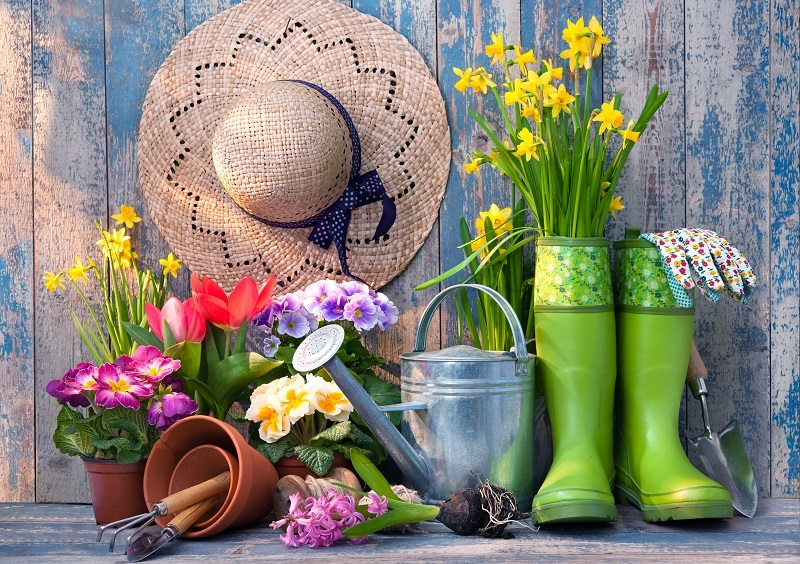Caring for Hydrangeas Through Every Season of the Year
Hydrangeas are renowned for their lush blooms, captivating colors, and the way they transform gardens into enchanting retreats. Whether you have bigleaf hydrangeas (Hydrangea macrophylla), panicle hydrangeas (Hydrangea paniculata), or oakleaf hydrangeas (Hydrangea quercifolia), understanding seasonal care is essential for a thriving, vibrant display. This comprehensive guide will walk you through hydrangea care across spring, summer, autumn, and winter, ensuring your beautiful shrubs flourish all year long.
Understanding Hydrangea Varieties and Their Unique Needs
Before diving into season-specific tips, it's important to know your hydrangea type because each has unique caring requirements. Here's a quick rundown:
- Bigleaf Hydrangeas: Famous for their blue or pink flowers, color depends on soil pH.
- Panicle Hydrangeas: Cone-shaped white or pink blooms, very hardy and sun-tolerant.
- Oakleaf Hydrangeas: Distinctive leaves turn vibrant red in autumn, prefer part shade.
- Smooth Hydrangeas: Known for large, white flower balls, tolerant of colder climates.
- Climbing Hydrangeas: Lush, spreading vines perfect for trellises and walls.
Caring for hydrangeas effectively means considering their specific type, local climate, and desired blooming results. Now, let's delve into nurturing hydrangeas throughout every season of the year!

Spring Hydrangea Care: Awakening & Growth
As winter thaws, spring breathes new life into your hydrangea garden. This is a crucial period to set the stage for healthy foliage and abundant blooms.
Spring Pruning Tips
- Know Your Blooming Wood:
- Bigleaf and oakleaf hydrangeas bloom on old wood, which means their flower buds formed the previous year. Prune only dead or damaged branches in early spring to avoid snipping off future blooms.
- Panicle and smooth hydrangeas bloom on new wood, so they can be pruned back more assertively in late winter or early spring to encourage lush new growth.
- Remove any deadwood, winter-damaged branches, and old spent blooms.
- Shape your hydrangea shrubs only if necessary to control size and form.
Fertilizing Hydrangeas in Spring
- Apply a balanced, slow-release fertilizer as new leaves start to appear.
- For color control:
- To encourage blue blooms, use fertilizer low in phosphorus and amend soil with aluminum sulfate.
- For pink blossoms, use fertilizer high in phosphorus and add garden lime if your soil is naturally acidic.
Watering and Mulching Hydrangeas
- Hydrangeas crave steady moisture during their spring growth spurt, but they dislike soggy roots--use rich, well-drained soil.
- Apply a 2-3 inch layer of organic mulch around the base to stabilize soil temperature and moisture, encouraging robust, healthy plants.
Summer Hydrangea Care: Maximizing Blooms
Glorious summer is hydrangeas' time to shine. With proper care, your garden will explode with color and lush foliage. But heat and dryness can stress your shrubs--here's how to keep them thriving.
Efficient Watering
- Deep, Regular Watering: Most hydrangeas require about 1 inch of water per week, more during droughts. Water early in the day to reduce evaporation.
- Avoid wetting the leaves--drip irrigation or watering at the soil line minimizes risk of fungal diseases.
- Monitor soil moisture--use your finger to check that the top inch of soil stays consistently damp.
Supporting Your Hydrangeas Against Heat
- Mulching is still important--add fresh mulch if the previous layer has thinned, to beat the summer heat.
- "Wilting leaves" might simply signal the plant is protecting itself from the midday sun. If leaves perk up again by evening, extra water might not be necessary.
Deadheading for Extended Blooms
- Regularly remove spent blooms to encourage the production of new flowers and maintain a tidy appearance.
- Use clean, sharp scissors or pruners. Cut just above a pair of healthy leaves or a node.
Summer Fertilization
- If you applied slow-release spring fertilizer, additional feeding might not be needed.
- If leaves are pale or growth is lackluster, apply a light, balanced fertilizer in early summer only--avoid fertilizing late in the season, which may encourage tender growth susceptible to autumn frosts.
Fall Hydrangea Care: Prepping for Dormancy
As autumn approaches, hydrangeas transition from active growth to preparing for winter rest. This period is about helping plants harden off and protecting them against cold.
Late Season Pruning
- Be cautious! Most hydrangeas (especially those blooming on old wood) should NOT be pruned in autumn, or you risk removing next year's flower buds.
- Only remove spent blooms ("deadheading") and occasional dead or diseased wood.
Reducing Watering
- Dial back on watering in late autumn, especially when rain is plentiful, allowing the plant to slow its growth and prepare for dormancy.
Winterizing Hydrangeas
- After the first frost, pile 4-6 inches of mulch (straw, shredded leaves, compost) around the base to insulate roots.
- Consider additional protection (like burlap wraps) for sensitive varieties or in colder regions with harsh winters.
- Tip: Leave dried blossoms in place over winter for added frost protection and attractive winter interest.
Winter Hydrangea Care: Protection and Planning
Hydrangeas rest beneath the surface in winter, but a bit of ongoing attention can ensure their health as they prepare to reemerge in spring.
Monitoring for Moisture
- If your region experiences dry winter winds, occasionally check that soil moisture is adequate on mild days.
- Avoid excess moisture; soggy roots during freeze-thaw cycles can cause root rot.
Preventing Winter Damage
- Check protective mulch and wraps after severe weather, replenishing as needed.
- If heavy snow or ice accumulates on branches, gently brush it off to prevent breakage.
Planning Ahead for Next Year
- Review the past year in your hydrangea garden. Was bloom production as expected?
- Order new hydrangeas or consider propagating from cuttings in late winter indoors.
- Plan soil tests for early spring to adjust pH and nutrient levels, particularly if you want to change bloom color.
Hydrangea Care FAQ: Troubleshooting and Expert Tips
Why aren't my hydrangeas blooming?
- Incorrect pruning is a common culprit. Ensure you know whether your hydrangea blooms on old or new wood.
- Spring frosts and winter damage can kill developing flower buds, especially in northern climates.
- Poor sunlight--while some hydrangeas prefer dappled shade, too little sun can mean no blooms.
How can I change the color of bigleaf hydrangea flowers?
- Blue flowers: Lower soil pH (more acidic) by adding aluminum sulfate.
- Pink flowers: Raise soil pH (more alkaline) with garden lime.
- It's best to amend soil in early spring and be patient; dramatic color change can take a season or two.
Are hydrangeas deer resistant?
- No, deer tend to love hydrangeas, especially in rural areas. Protective fencing or repellents may be needed.
What's the best way to propagate hydrangeas?
- Softwood cuttings in late spring are the most reliable method. Use a rooting hormone for better results.

Top Hydrangea Care Tips for Every Season
- Identify your hydrangea type before pruning or fertilizing.
- Mulch annually to maintain moisture and protect roots in both hot and cold weather.
- Water deeply but avoid overwatering--consistency is key!
- Nourish in spring with slow-release fertilizer tailored to your soil and color preferences.
- Deadhead regularly in summer for extended bloom-time and tidy growth.
- Protect with additional mulch and covers pre-winter, especially for sub-zero climates and younger shrubs.
- Plan ahead--keep a garden journal to mark pruning, flowering, and soil amendments.
Final Thoughts: Enjoying Hydrangeas Year-Round
Hydrangeas reward mindful gardeners with breathtaking color, form, and variety. By caring for your hydrangeas through every season of the year, you can ensure healthier shrubs, more spectacular blooms, and exceptional garden beauty from spring's first leaves to winter's magical silhouette. Observe your plants, respond to their changing needs, and enjoy the lush transformation your thoughtful care brings to the garden year after year!
```
